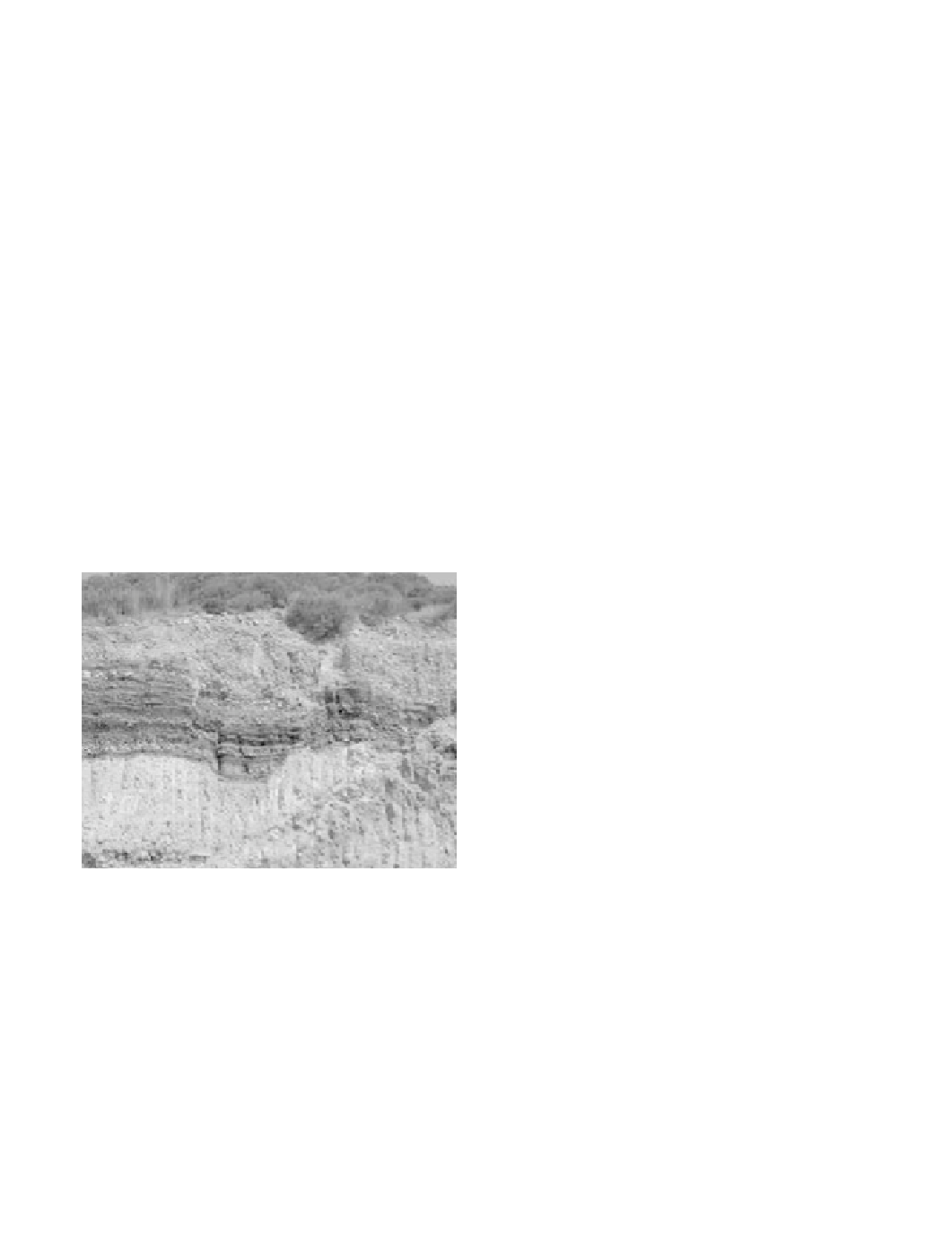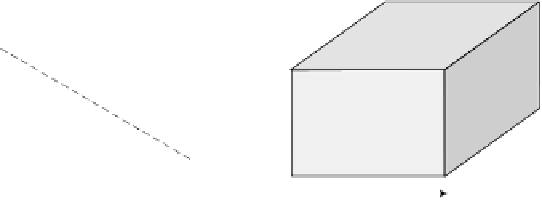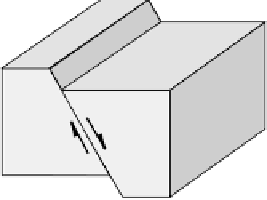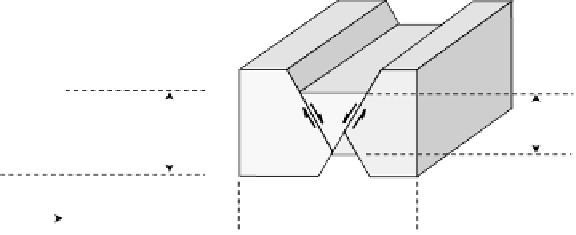Geoscience Reference
In-Depth Information
amounts according to orientation such as the larger
compressive stress
vertical load will be
2
, smaller in magnitude than one of
the horizontal stresses (
2
3
horizontal stresses; second, increasing the horizontal stress
levels but by different amounts so the vertical load will be
the smaller stress
1
will be the vertical load and
1
) and larger than the other (
3
).
Fault angles with respect to the principal stress
1
can be
predicted from Coulomb's fracture criterion,
c
0
n
, with the coefficient of internal friction (
1
2
horizontal stresses; and
third, increasing the magnitude of the stress in one direc-
tion and decreasing the stress in the other direction, so the
3
and
) and the
cohesive strength (
0
) both depending on the nature of
the rock involved. This criterion has been validated in
(a)
(b)
(c)
N
Undeformed state
s
1
s
2
s
3
z
0
F
1
F
2
F
2
F
1
x
0
(d
1
)
(d
2
)
z
2
z
1
x
1
x
2
(e)
Fig. 4.99
Normal faults form to accommodate an extension in some section of the crust. (a) Anderson's model for the relation between a pair
of normal conjugate faults (
F
1 and
F
2) and the orientation of the principal stress axes are shown. According to this model, normal faults form
when
1
is vertical (this will be the orientation of the principal strain axis
S
3
). (b) The stereographic projection (Cookie 19) for the model in
(a) is shown. (c) Considering an initial segment of the crust, normal faulting is a response of brittle deformation caused by extension, and
produces a progressive horizontal lengthening and vertical shortening by the formation of new faults (d
1
) and (d
2
). (e) An example of normal
faults cutting recent deposits (Loutraki, Greece).




























Search WWH ::

Custom Search